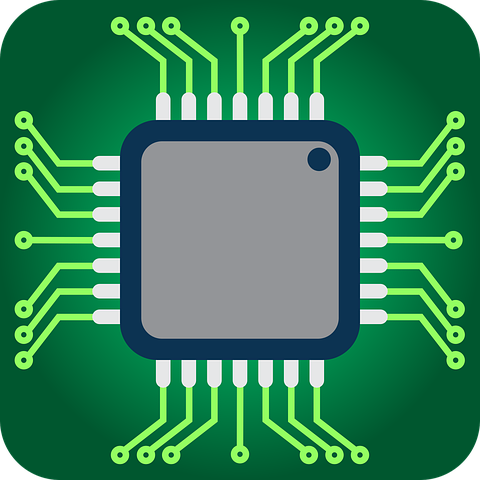
Today, CD-SAXS (critical dimension small angle X-ray scattering) is an industry-wide measurement technique for next-generation semiconductor fabrication. Developed by NIST researchers Wen-Li Wu and Joe Kline, CD-SAXS matured from a laboratory technique into a practical application with the help of industry partners through multiple cooperative research and development agreements. This collaborative effort was needed to drive this technology to the market in the quickest time possible. About 60 patent applications can be traced to this research. Currently, all major tool vendors and semiconductor fabrication facilities have CD-SAXS development projects underway that can be traced directly to this NIST innovation.
Most electronic devices that are used every day by millions of people contain semiconductors. These semiconductors efficiently allow electricity to flow through them, playing a pivotal role in powering current and future technologies. The semiconductor manufacturing industry currently generates approximately $300 billion in revenue annually.
Twenty years ago, a small team of NIST researchers was focused on measuring transistors. Transistors are semiconductor devices that amplify, control, and generate electrical signals. Transistors, in turn, are the active component of integrated circuits, also known as microchips. A single microchip can contain billions of transistors. These microchips have been developed to be as small as a fingernail with transistors each the size of a single strand of DNA. The measurements must be spot on for every component to operate correctly, and this can be a difficult challenge, especially as semiconductors get smaller each year. Traditionally, transistors have been measured with electron microscopes, but as transistors have decreased in size, electron microscopes have been unable to keep up.
The NIST team, led by Wen-Li Wu and Joe Kline, sought a way to measure the shape and size of the billions of complex nanoscale transistors that power electronics. The industry needed new measurement methods that could rapidly and non-destructively quantify those dimensions. Rapid, accurate measurements were required to ensure that the manufacturing and supply chain would not be disrupted, negatively impacting the industry.
Around this time, Wu and Kline’s NIST team invented X-ray diffraction, which provides detailed data about the chemical structure and physical properties of materials. NIST researchers used X-ray diffraction to study the properties of atoms, so the team saw an opportunity to use this technique on nanometer-scale transistors similar in size to the structure of DNA and proteins. Wu and Kline began to develop the technique for application to the semiconductor industry. Their proof-of-concept was the measurement of semiconductors' shapes, angles, and roughness of features. They needed to prove to the industry that they could quantify this to implement this new measurement into common practice.
This method, known as critical dimension small angle x-ray scattering (CD-SAXS), can measure the shape of three-dimensional nanostructures in semiconductor devices non-destructively. This innovative measurement technique was designed at a synchrotron facility, which provided an immensely powerful source for x-rays.
The transition from concept to industrial application was a significant hurdle to overcome as CD-SAXS was vastly different from the metrology techniques at the time for semiconductors. It was so different that Wen-Li and Joe had to spearhead the charge to build out the entire infrastructure from scratch, from hardware specifications to software and data analysis tools. Along with this came the need for sustained interaction with the semiconductor industry to create acceptance in the market. They needed to convince the semiconductor manufacturers to adopt this technique, which would disrupt the current market of semiconductor measurement techniques but was entirely needed to pave the way for the future of semiconductors as they continue to be produced at smaller, miniaturized scales.
The team quickly designed a CD-SAXS prototype in the lab by building out the entire infrastructure, performing feasibility studies, and developing the needed analytical methods and software. During this time, private-public partnerships were initiated between the NIST team and businesses, which was a necessary step in expediting the technology to manufacturing facilities to keep up with semiconductor production. Industry leaders collaborated with the NIST team to use the CD-SAXS prototype for measurements, allowing the NIST team to validate the superiority of CD-SAXS against standard test methods.
CD-SAXS continues to be widely adopted across the semiconductor manufacturing industry as semiconductors continuously decrease in size. Industry must have a highly accurate method to measure semiconductors as they have become and will continue to be a major component of technologies found and used in everyday life.

